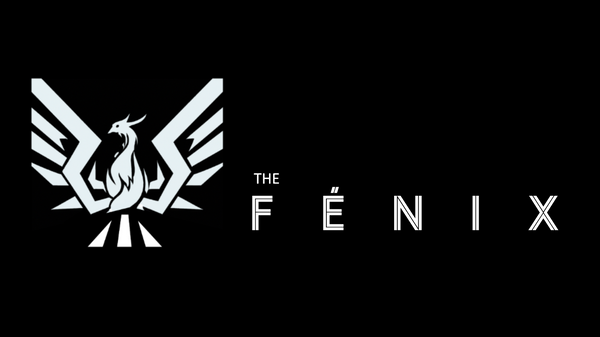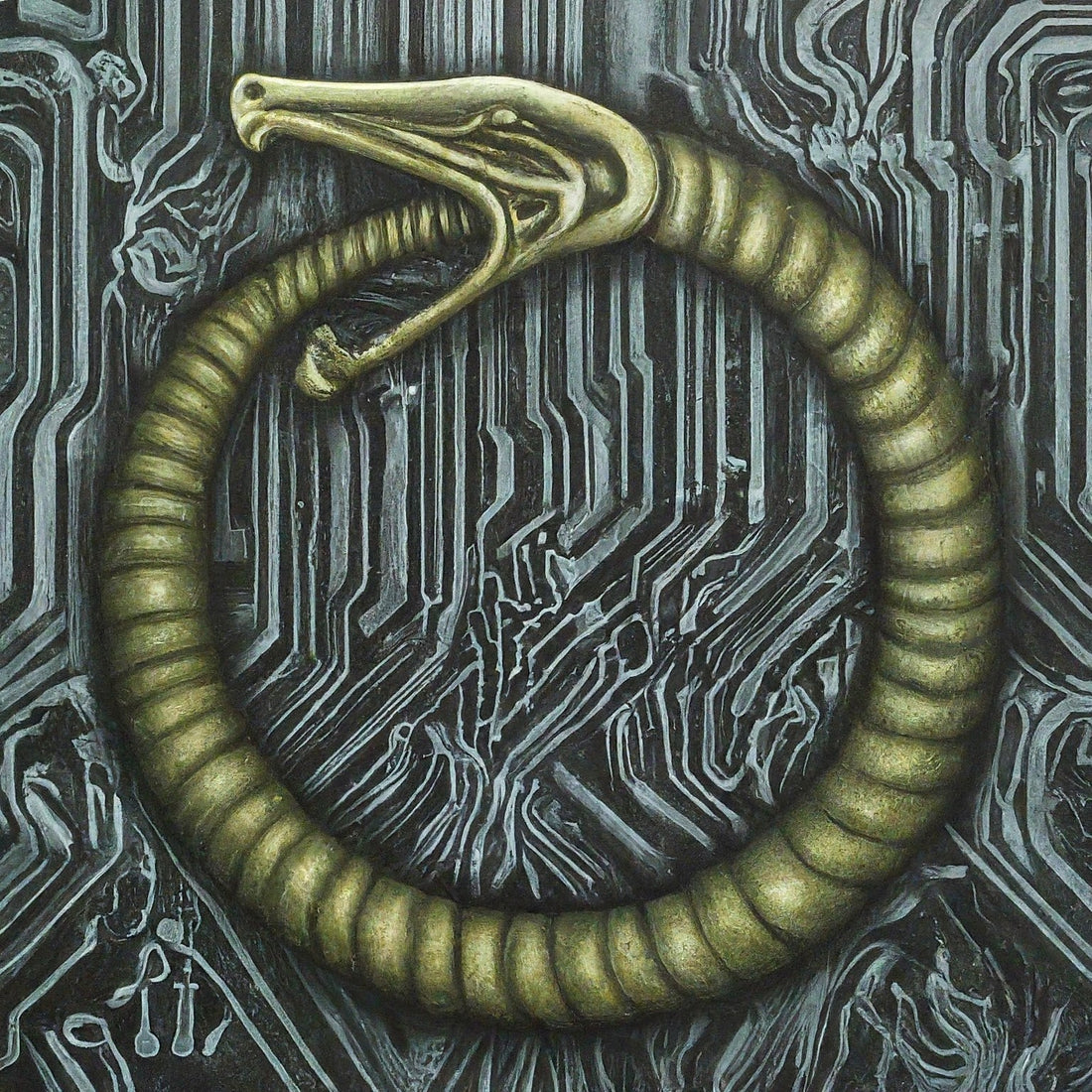In the previous post, I related three factors that I talk to parents about when considering how fast one can expect to see a difference when working with us in our Competitive Edge Training Center. I also explored some of the nuances related to the first two factors. But, I left the third factor to a later post. This is that post.
That third factor, and the topic of this post, is the existence of a "meta-skill". That is to say, a skill that is about other skills. In this case the meta-skill is the skill of acquiring skill or adjusting an already-acquired skill. Is this a thing?
I believe it is.

Often, the image of an Ouroboros is used to represent the phenomenon of "going meta". The idea is that a snake biting its own tail is an example of a thing doing what it does normally, but doing it to itself. A skill that affects how we acquire skill has that general character.
The basis for this belief is not a scientific study (I believe there are no studies pertaining to this question because doing such a study would be enormously difficult to quantitatively measure and control). Instead, my basis for this is personal experience.
As a coach, I see a vast difference among hockey players in how they pick up new skill. This is seems like it may be enough to say there are individual differences in how good people are at picking up skill. But that could be dismissed based on the idea that there is a large set of factors that go into how each skater picks up each skill. With all of those factors in play, the effect of some general skill acquiring ability and the sum of all these other effects would all blend together.
I think that is right. It is hard to know if what I am seeing is individual difference in acquiring skill or just how strong some kids' habits are or how committed they are to working toward the skill we are teaching.
However, as a coach, I make dedicated efforts to become good at demonstrating technique. This has led to a couple of experiences which cause me to think I am one of the ones who have particularly good physical skill-acquiring ability (this is not a brag because the next question should be about what I have done with that ability and the answer would be "not much of note").
Permanently Changing Technique in One Shot
To start, I grew up on an era where the top hand position on the stick was not something that hockey coaches paid attention to. I made it into adulthood with my top hand tipped a little bit so that, as it gripped the knob, the palm faced a little bit upward whereas it should be basically facing sideways. At some point another coach pointed this out to me. I do not recall paying attention to it much after that, yet I now get the top hand position right automatically. As far as I can remember I changed that habit in one shot.
Contrast this with young skaters that I coach. When teaching puckhandling with young skaters, I would estimate that the average number of reminders about top hand position per lesson is in the neighborhood of five. Then we get to the next session and we are reminding them again. And the next. Progress is made, but it requires repeated persistent diligence in many cases. The cognitive control that comes with age likely has something to do with this. However, age usually also brings entrenched habits, so in theory it should be harder to make that sort of change as an adult. This difference between how I made change so rapidly and how hard it can be for kids is quite a contrast.
Mimicking Common Errors
Another striking example comes from a time when I was making videos to show instructors how to coach on a skating treadmill. Part of this is showing them what to look for. This means that they not only need to know how it looks when its done right, but also what common errors look like. How can we get video of common errors?

Competitive Edge's Skating Treadmill in Action
One good way would be to plan ahead and take video of kids who are making those errors. I didn't plan ahead. Also, possibly those kids don't want to be used as examples of what not to do. So, in a pinch, I was called upon to do those demonstrations.

Is this a chameleon blending in with the mural in the background? Or is it a mural of a chameleon? Either way, I needed to become a chameleon of mimicking skating techniques.
I got on the treadmill and warmed up. We did some video of various things to show aspects of technique where I strove to do them right. Then came time to mimic common errors and I was confronted with the challenge in front of me. It should be hard to get these techniques that I needed to show "right". I hadn't done them before. Or, at least, it had been a long time. But, somebody had to do it, so off we went.
In my head, I worked through what each looked like and then considered how it would feel to do those movements. Another coach was there to start and stop the treadmill for me. He hit start and we were off.
After each I asked if they looked like what we wanted to show. There may have been some feedback and adjustment in a few cases, but mostly the answer was yes. I had mimicked the errant version of the technique well.
When I went back to edit the video, I was surprised how consistently I was in the ballpark with each of these errors. Basically, on my first try, I was able to modify my technique in certain specific ways to create a passable facsimile of common youth-skater technique errors.
Certainly, the fact that I had seen these errors countless time as a skating coach helped. But, still, I was struck by the fact that I had that ability.
What goes into being "good" at acquiring skill?
So, let's say my suspicion is right. Let's say I am a particularly good skill-acquirer. What would go into that?
One thing may jump out at you instantly and that is simply the ability to physically produce a mimicked version of a technique from a visual model. That is what I described above. I had visual models in my head (learned from lots of repetitions as a skating coach) and I was able to use that as a template for what my body should do. Note that just having a good visual model is only part of this. One also needs to have some way of mapping that model onto their own body so their body can produce movements that match the model.
Doing that undoubtedly relies on some sort of general coordination. Often the term "hand-eye coordination" is referenced related to this. I think, for most people, that term gets at the general concept of body coordination even though its direct meaning seems to only speak to interactions involving the hands and eyes. Regardless, being a coordinated athlete that generally moves efficiently and doesn't get in one's own way, would help.
However, there is another concept that, from what I understand from scientists in the field, is skill that is trainable and intuitively would seem to be at the heart of being able to pick up skill quickly. This concept is called "proprioception" and it refers to the body's own motion capture system.

Proprioception creates a model of your body's position in space in your own mind. Your body can use that to analyze how good an attempt at a technique was. And your body regularly uses proprioceptive information to guide movement by ensuring that the motion matches what was intended and correcting errors when it does not.
In the modern technology of motion capture, a set of sensors are used to turn the movement of some physical object (typically a human body) into a quantitative model of that motion in a computer file. If your body has its own motion capture system, what would that be?
With proprioception, sensors in your own nervous system gather signals that correlate to your body's overall orientation in space, the angles at the joints, and more to build a map of your body's spatial position that you consciously perceive. Actually, the "you consciously perceive" part is optional. That proprioception information can be used outside of your conscious awareness as well and this can guide your movements such that they match up to your intentions.
If your proprioceptive signals are strong and/or well-used, your movements should much better match what you had hoped for (better match of your motion to the motion you had intended) and your error feedback (used by your brain during the movement skill learning process) should be richer allowing for more effective and accurate corrections on your next attempt. In combination we should expect great proprioception to be a major difference making in rate of improvement. And as I said, from what I understand, proprioception can be improved with training.
If proprioception is so valuable and can be trained, why aren't we training it? Well, in truth, we are, just not on purpose. Any movement training that provides rich feedback about how well the movement matched intentions should help the body to calibrate proprioception as well. But, maybe there are opportunities out there to push proprioception further sooner and thus accelerate later movement skill acquisition for athletes of all ages!

